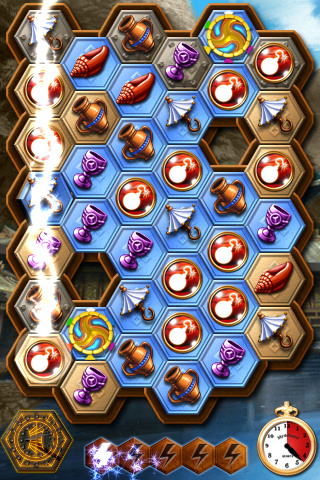On May 5, 2009, IBM announced the release of the second generation of its serious game Innov8. The online 3D simulation game offers a new global “collaboration feature”, letting players work within a virtual team to progress through the game. Thanks to this new teaming capability, Innov8 is finding uses outside university classrooms to become an educational tool for businesses.
Innov8 2.0 features three additional scenarios that reflect significant needs in today’s businesses. To learn about environmental considerations, players will evaluate a traditional supply chain model to reduce their company’s carbon footprint. Another scenario will have players evaluating existing traffic patterns, re-routing traffic based on sensor alerts of disruptions such as accidents and roadway congestion. And the last will have players using a call centre environment to develop more efficient ways to respond to customers.
The revamped application was rapidly picked up by the University of Farmers, Claims, a corporate campus that trains over 10,000 Farmers Insurance Exchange claims employees across the United States. The University will be using Innov8 and its new call centre training scenario to give employees hands-on experience in processing claims and managing customer calls. This training is expected to help streamline operations and improve the quality of the company’s customer service.
“We see serious gaming as an ideal delivery system for a number of learning opportunities,” said Mike Cuffe, vice president of learning at the UofF, Claims, in a news release. “Customer-focused, accurate and timely claims processing is critical to our company’s bottom line… our employees now achieve competence more quickly, serve our customers more effectively and compassionately, and are better prepared for advancement opportunities.”
Phaedra Boinodiris, IBM Serious Games Product Manager, explains that Innov8 lets players learn “the anatomy of a business process model [by] running around finding clues, interviewing people, and completing puzzles… When you discover what’s wrong, you can collaborate to find ways to change the model to improve business operations.”
“We are seeing exponential growth in the serious games market. These games are being used to introduce new skills, evaluate business performance and develop leadership capabilities,” said Sandy Carter, Vice President of Service Oriented Architecture, Business Process Management and WebSphere at IBM.
IBM states that people retain information anywhere from 80 percent to 108 percent better when learning through serious gaming as opposed to traditional teaching methods. Originally developed based on an interactive shooter game from Vicious Cycle, Innov8 1.0 is being used by nearly 1,100 schools as part of their curriculum. Innov8 2.0 can be played online here.


 Since Bejeweled arrived a few years ago, match three style puzzle games have become extremely popular amongst casual players. Fans of those games will find a lot to like about Azkend. The game feels instantly familiar, but brings quite a few unique traits to the table.
Since Bejeweled arrived a few years ago, match three style puzzle games have become extremely popular amongst casual players. Fans of those games will find a lot to like about Azkend. The game feels instantly familiar, but brings quite a few unique traits to the table. There are several unique tiles in Azkend to help add some variety to the game as well. Steel tiles have to be matched on twice in order to turn blue. Other tiles like those encased in ice or infected by tar must have a tile next to them cleared in order to make them usable. There are also locked tiles that will be placed to block areas of a given board. These must also have a tile cleared next to them to be cleared. Finally there are wildcard tiles that let you to string sets of matching tiles together, allowing for longer chains and more lightning being unleashed.
There are several unique tiles in Azkend to help add some variety to the game as well. Steel tiles have to be matched on twice in order to turn blue. Other tiles like those encased in ice or infected by tar must have a tile next to them cleared in order to make them usable. There are also locked tiles that will be placed to block areas of a given board. These must also have a tile cleared next to them to be cleared. Finally there are wildcard tiles that let you to string sets of matching tiles together, allowing for longer chains and more lightning being unleashed.